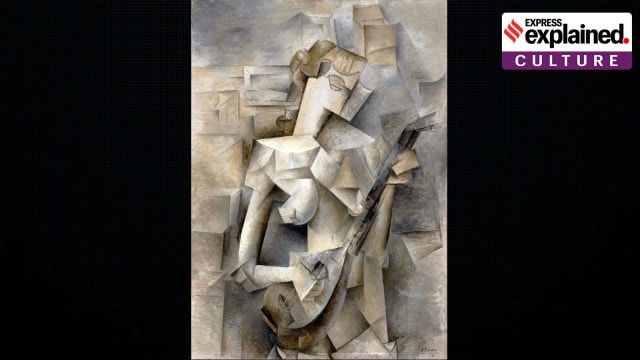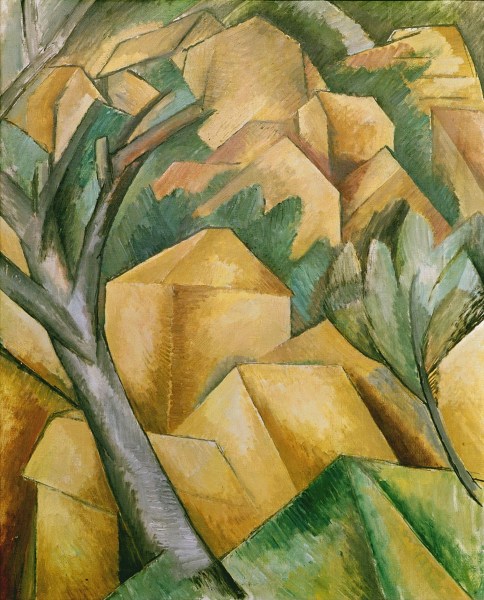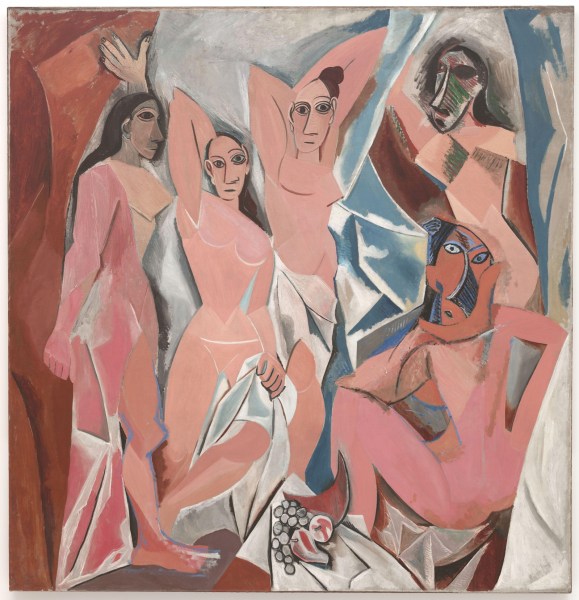- India
- International
What is Cubism — and how Braque and Picasso created it
It is well known that Pablo Picasso pioneered Cubism. What exactly is Cubism? What did Picasso do that was considered so revolutionary? We explain.
 Girl with a Mandolin is a 1910 painting within the Cubist movement by Pablo Picasso. (Wikimedia Commons)
Girl with a Mandolin is a 1910 painting within the Cubist movement by Pablo Picasso. (Wikimedia Commons) October 25 marks the 142nd birth anniversary of the renowned Spanish artist Pablo Picasso (1881-1973). His work consists of thousands of paintings, drawings, engravings, sculptures, and ceramics.
In partnership with French painter George Braque (1882-1963), Picasso pioneered Cubism — a revolutionary visual art movement that began in 1907 and lasted till 1914. Although short-lived, Cubism was one of the most influential approaches to making art in the early 20th Century. It paved the way for the emergence of non-representational art movements, like Surrealism, and inspired artists like Marcel Duchamp, who pioneered conceptual art.
What is Cubism?
First, Cubism has nothing to do with cubes. The name ‘cubism’ seems to be derived from a snide comment by French artist Henri Matisse (1869-1954), who called one of Braque’s paintings “a picture made up of small cubes”.
 Georges Braque’s Maisons à l’Estaque (Houses at L’Estaque) painted in 1908. (Wikimedia Commons)
Georges Braque’s Maisons à l’Estaque (Houses at L’Estaque) painted in 1908. (Wikimedia Commons)
Unlike its predecessors, Cubism involved artists seeing an object not from a single viewpoint but from every conceivable angle. It was the rejection of the traditional approach to making art, where art was just a copy of nature or an object and the artists adopted age-old techniques of perspective, modelling, and foreshortening.
“Cubism is about acknowledging the two-dimensional nature of the canvas and categorically NOT about trying to re-create the illusion of three dimensions (a cube, for example),” wrote Will Gompertz, former board director of the Tate Gallery, in his book, “What Are You Looking At? 150 Years of Modern Art in the Blink of an Eye”.

If Picasso and Braque were to paint a cardboard box, they would metaphorically take it apart and open it to make a flat plan, Gompertz added. This helped show all sides of the box at once. However, the artists would also want their composition to showcase the box’s three-dimensionality on the canvas, which the flat plane can’t do.
 Picasso’s Violon (Violin) painting, painted in 1911-1912. (Wikimedia Commons)
Picasso’s Violon (Violin) painting, painted in 1911-1912. (Wikimedia Commons)
“So they took an imaginary walk around the box and chose the views they felt best described the object before them. They would then paint and rearrange these ‘views’ or ‘pieces’ on the canvas in a series of interlocking flat planes. The order was a rough approximation of the box’s original three-dimensional shape, so that it was still discernible as a cube but laid out in two dimensions,” Gompertz wrote.
By doing this, Picasso and Braque thought their art would invoke “a much stronger feeling of recognition” about the box or any other subject artists might create.
Cubism was meant to make people pay more attention to everyday objects that were usually overlooked and present a more precise representation of how people actually perceive an object.
What inspired Cubism?
Both Picasso and Braque took inspiration from the later works of French artist Paul Cézanne. As a Post-Impressionist painter, Cézanne began to represent nature with geometric shapes. For instance, a tree was painted as a combination of cylinders and an apple was a sphere. This mode of making art was central to the early development of Cubism.
Cubism was also very much a reflection of the groundbreaking developments in science and technology during the early 1900s. Picasso and Braque were aware of Albert Einstein’s Special Theory of Relativity, published in 1905, in which the scientist proposed that space and time don’t exist as independent entities, combining the three dimensions (height, width and depth) of space and one dimension of time into a single four-dimensional continuum, known as spacetime.
 Les Demoiselles d’Avignon (The Young Ladies of Avignon, originally titled The Brothel of Avignon) is an oil painting created in 1907 by Picasso. It was a precursor to the style that became known as Cubism. (Wikimedia Commons)
Les Demoiselles d’Avignon (The Young Ladies of Avignon, originally titled The Brothel of Avignon) is an oil painting created in 1907 by Picasso. It was a precursor to the style that became known as Cubism. (Wikimedia Commons)
“Like many of their friends, the artists would enjoy long and animated conversations about the concept of a fourth dimension, and would happily discuss the ramifications arising from other scientific discoveries. Not least, the realization that the atom was not the full stop definitively concluding scientific knowledge, but was in fact merely the end of the prologue… It made their Cubist idea of breaking matter down into a series of interrelating fragments seem an entirely logical step to take,” Gompertz wrote.
How did Cubism evolve?
The art movement developed in two distinct phases, including the initial analytical cubism, and a later phase known as synthetic cubism, according to a report by Tate Museum.
Artworks made during the analytical cubism phase (1907-1912) mostly displayed objects from different viewpoints (as discussed before), painted in mute tones of blacks, greys and ochres, the report added.
 Fruitdish and Glass, 1912, by Georges Braque, in which he cut and pasted wallpaper printed with a wood-paneling pattern on to a canvas. (Wikimedia Commons)
Fruitdish and Glass, 1912, by Georges Braque, in which he cut and pasted wallpaper printed with a wood-paneling pattern on to a canvas. (Wikimedia Commons)
The synthetic cubism phase (1912-1914) involved simpler shapes and brighter colours in comparison to the aforementioned phase. Most significantly, however, it also entailed the use of real-life objects — Picasso and Braque incorporated wallpapers, newspaper cuttings, and oilcloths into their paintings. They used the technique to not only make Cubist paintings more legible but also to elevate the status of objects like an oilcloth from worthless rags to something unique and valuable.
“Cézanne pushed the door to Modernism open; these two young adventurers blew it out of its frame. They weren’t copying real life: they were appropriating it,” Gompertz wrote in this book.
More Explained
EXPRESS OPINION
May 04: Latest News
- 01
- 02
- 03
- 04
- 05







































